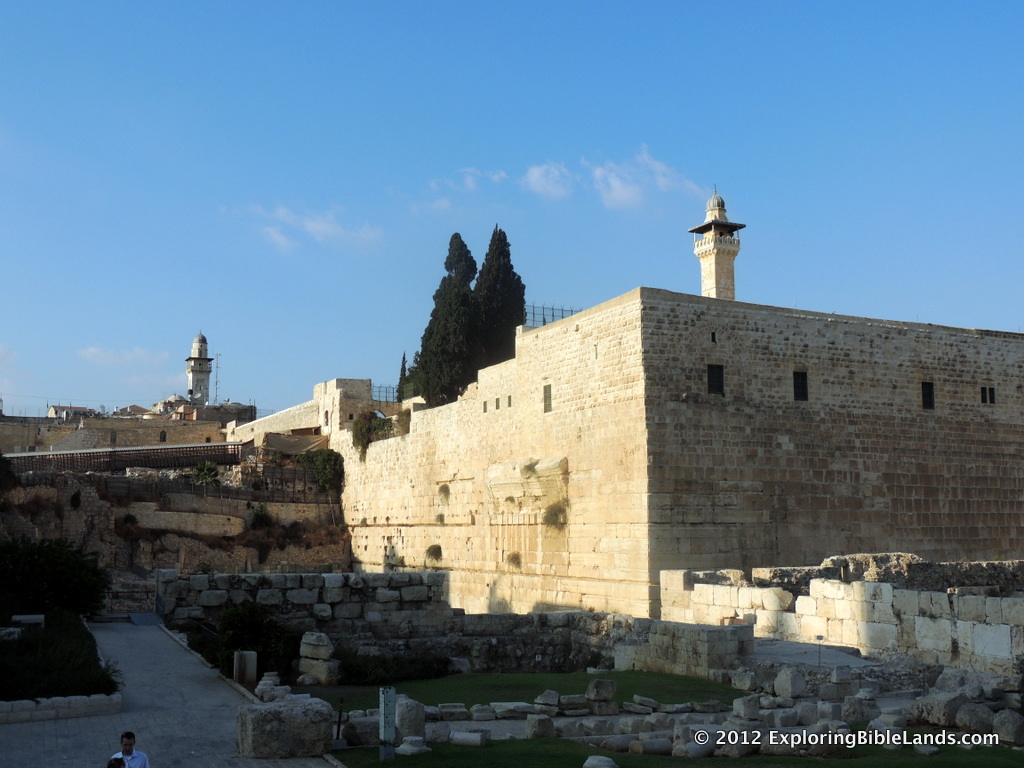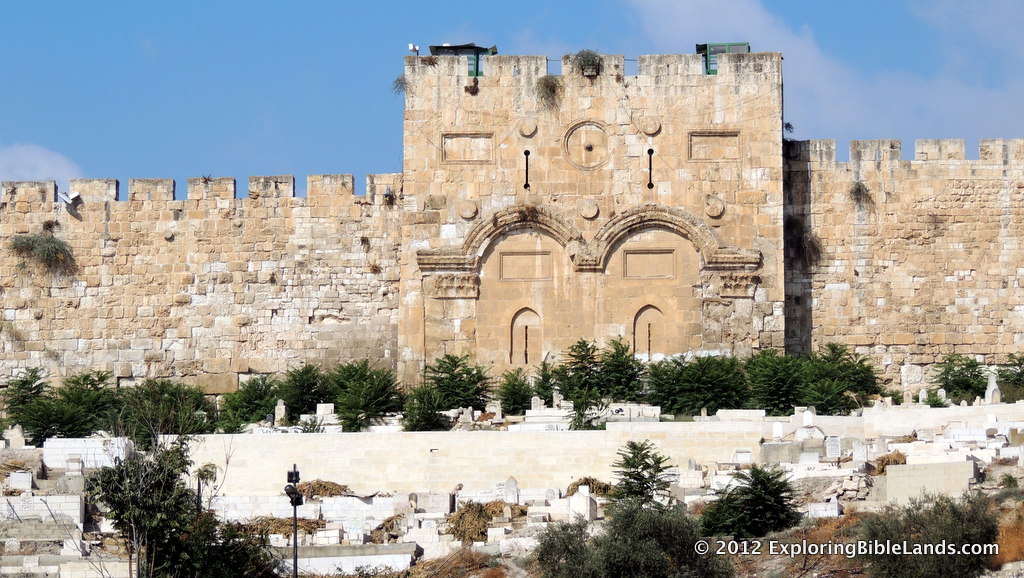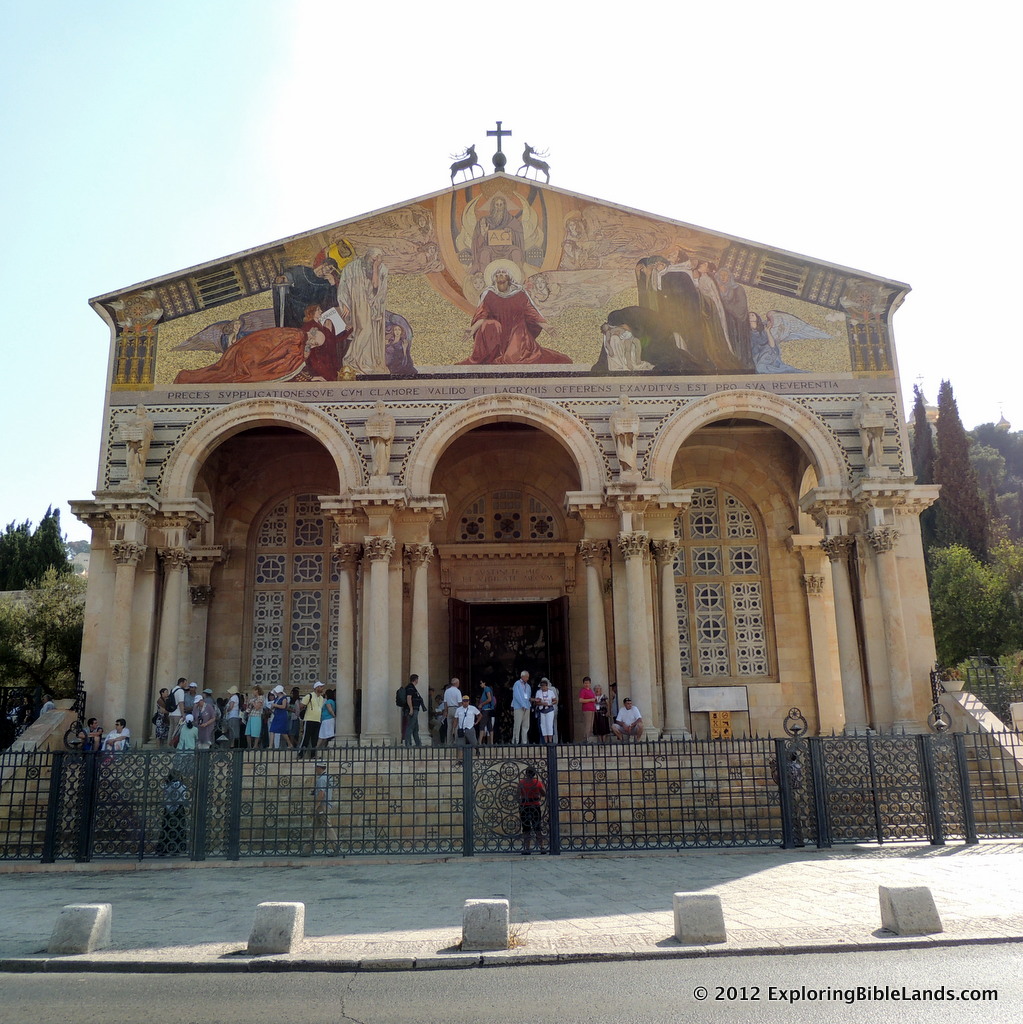In Matthew 4, we read the account of Satan tempting Jesus. One of those temptations is recorded in verses 5-7.
Then the devil took Him up into the holy city, set Him on the pinnacle of the temple, and said to Him, “If You are the Son of God, throw Yourself down. For it is written: ‘He shall give His angels charge over you,’ and, ‘In their hands they shall bear you up, lest you dash your foot against a stone.’” Jesus said to him, “It is written again, ‘You shall not tempt the Lord your God.’”
So, where is the "pinnacle of the temple"? Is it the top of the building? Honestly, we do not know. However, there are a couple of places that are generally considered when trying to answer this question.
The most accepted location is the southeastern corner of the Temple Mount. This would have been where the Royal Portico and Solomon's Porch met overlooking the Kidron Valley. At the time of Jesus, the height from this location into the Kidron Valley would have been around 450 feet. Of course, the top of the walls have been destroyed and rebuilt since then, so it is hard to know exactly how high it would have been. Either way, it would have been a very long fall into the Kidron Valley. The image at the top of this post is a picture that I took last September from the area of the Gihon Spring.
 The other location that is often discussed as being a possible location of the pinnacle of the temple is the southwestern corner of the Temple Mount. From this corner, you would have overlooked the Upper and Lower City and you would be directly above a Roman street complete with shops and other places of business. Back in the late 1960's, excavations directly below this spot revealed temple stones which were cast over during the destruction of Jerusalem in 70AD as well as an inscription. This inscription, which also fell from above, describes the southwest corner as "the place of the trumpeting". From this location, a priest would have blew his trumpet for different Jewish events. The image to the left is a current picture of this corner with with the buttress of Robinson's Arch about halfway down.
The other location that is often discussed as being a possible location of the pinnacle of the temple is the southwestern corner of the Temple Mount. From this corner, you would have overlooked the Upper and Lower City and you would be directly above a Roman street complete with shops and other places of business. Back in the late 1960's, excavations directly below this spot revealed temple stones which were cast over during the destruction of Jerusalem in 70AD as well as an inscription. This inscription, which also fell from above, describes the southwest corner as "the place of the trumpeting". From this location, a priest would have blew his trumpet for different Jewish events. The image to the left is a current picture of this corner with with the buttress of Robinson's Arch about halfway down.
 The final picture was taken at the model of Jerusalem at the Israel Museum. This model, around an acre in size, depicts Jerusalem during the first century. In this picture, you can see both of the Temple Mount corners that we have discussed here.
The final picture was taken at the model of Jerusalem at the Israel Museum. This model, around an acre in size, depicts Jerusalem during the first century. In this picture, you can see both of the Temple Mount corners that we have discussed here.
Both locations are viable options for the location of the pinnacle of the temple. From either location, a person would face certain death if they decided to jump off. Luckily for us, Jesus used His wisdom and did not succumb to any of the temptations that were thrown at him by the Devil. We all have a lot to learn from His example.
 Between the city of Jerusalem and the Mount of Olives, the Kidron Valley flows from north to south eventually emptying into the Dead Sea. This view from the ancient City of David looks south where the Hinnom Valley merges into the Kidron Valley. The homes on the side of the hill are in the Arab village of Silwan.
Between the city of Jerusalem and the Mount of Olives, the Kidron Valley flows from north to south eventually emptying into the Dead Sea. This view from the ancient City of David looks south where the Hinnom Valley merges into the Kidron Valley. The homes on the side of the hill are in the Arab village of Silwan.








